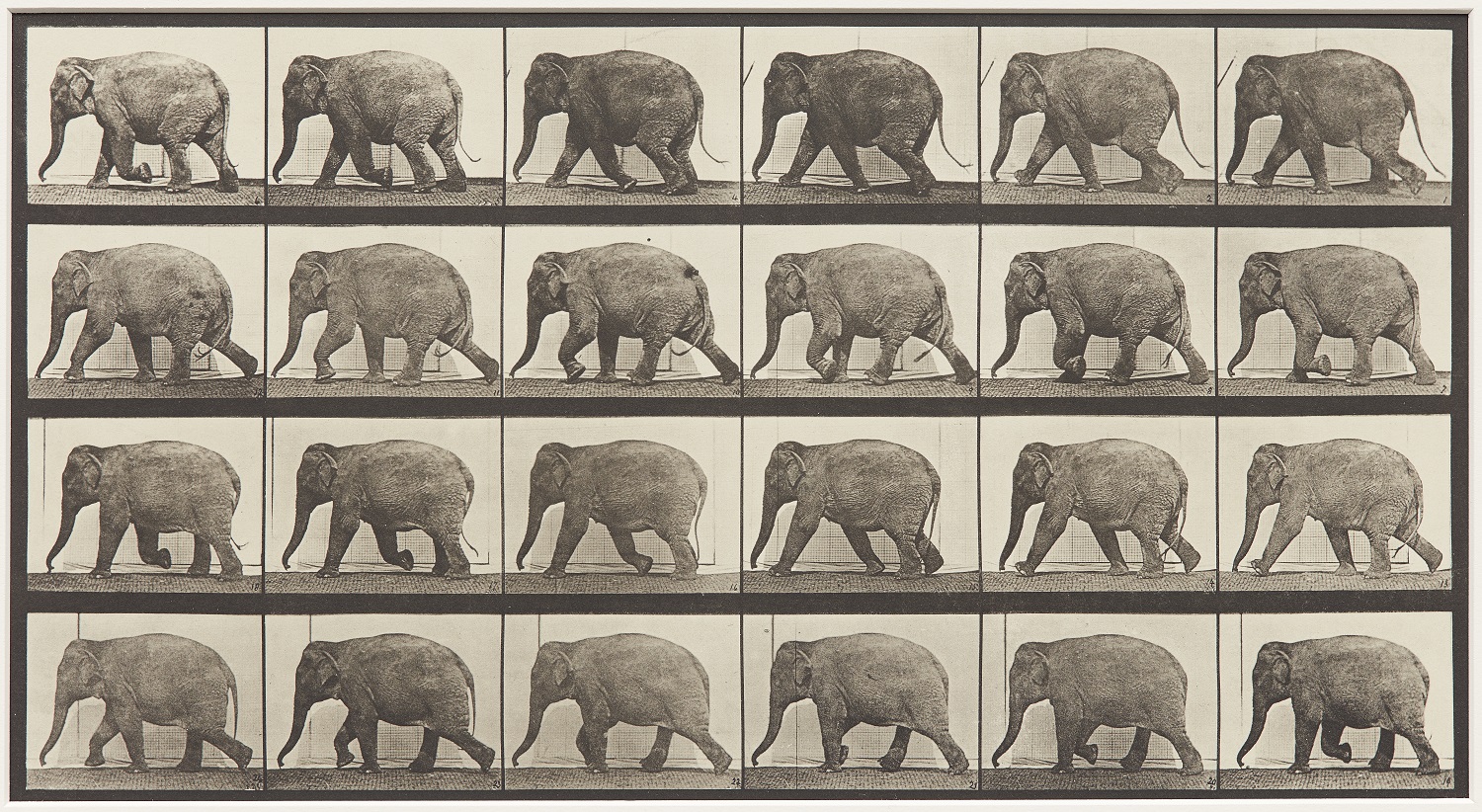Dial "M" for Muybridge

Eadweard Muybridge, Plate 616: Animal Locomotion, 1887. Collotype, Image: 22.5 × 33.3 cm, Malcolmson Collection. Gift of Harry and Ann Malcolmson in partnership with a private donor, 2014. Image © Art Gallery of Ontario.
The late 1800s was a period of major innovation in photography, and Eadweard Muybridge was a pioneer of the time with his revealing photographs capturing humans and animals in motion. But if you were alive in the 1870s, or you’re an art history gossip hound, you’d know him for more scandalous reasons.
Here’s the story: British-born Muybridge (his given name was Edward Muggeridge – he changed his name several times before landing on Eadweard Muybridge) developed his photographic skills in the 1860s in England while recovering from a serious stagecoach crash he sustained in Texas. But his craft brought him permanently back to the United States in 1872, when he married a woman named Flora Shallcross Stone. Two years later, Flora gave birth to son Florado, but the happy family scenario was short-lived. That year, Muybridge discovered a photograph of the boy among Flora’s belongings with “Little Harry” written on the back. Suspicion of the boy’s paternity fell on “Big Harry,” or Major Harry Larkyns, a drama critic and renowned scoundrel.
After tracking the critic down, Muybridge apparently announced, “Good evening Major, my name is Muybridge and here’s the answer to the message you sent my wife.” Muybridge then took out his pistol, and shot Larkyns point blank.
The murder trial was almost as salacious. Muybridge’s lawyer entered a plea of insanity due to his stagecoach crash-related head injuries. To prove Muybridge’s fragile state of mind, the lawyer used as evidence a self-portrait Muybridge took while sitting on the very edge of a staggering cliff in the Yosemite Valley. Muybridge was eventually acquitted because the jury was convinced the act of violence was a justifiable homicide. Yikes!
Cleary, Muybridge’s life makes for great gossip. Yet his professional accomplishments, many now on view in the Edmond G. Odette Family Gallery, are groundbreaking. His photo grids of horses, ultimately published in the four volumes of Animal Locomotion in 1887, proved for the first time that a horse indeed lifts all four hooves off the ground while galloping.
Come check out Muybridge’s work from the AGO Collection, scandal-free, until April 2018. See more of his photography below.
Are you an AGOinsider yet? If not, sign up to have stories like these delivered straight to your inbox every week



